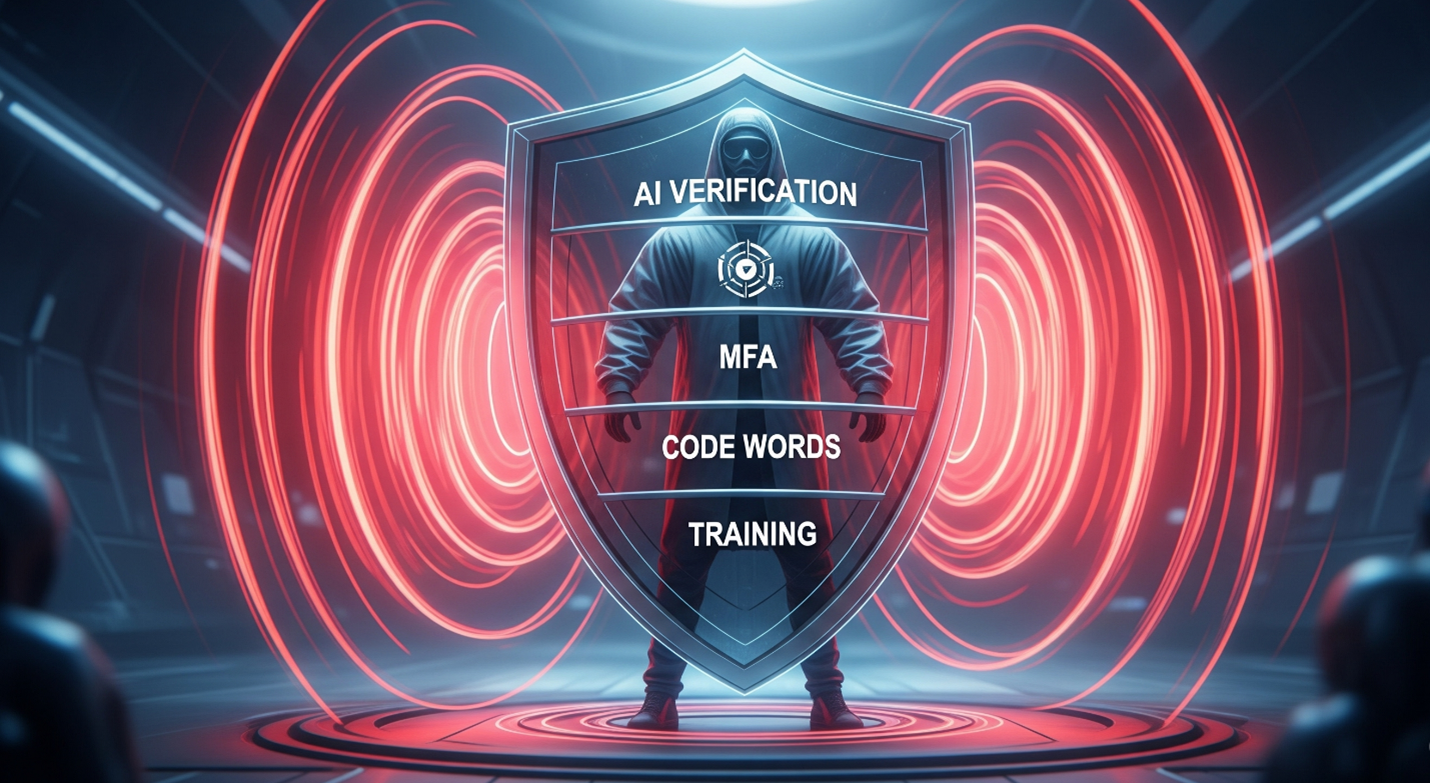For years, vishing (voice phishing) was the clumsy cousin of cybercrime, relying on crude robocalls and easily detectable scripts. That era is over. What was once a mere annoyance has morphed into a sophisticated, AI-powered threat capable of hijacking the most fundamental element of human connection: our voice. Cybercriminals are now weaponizing generative AI and deepfake audio to create high-fidelity impersonations of executives, family members, and colleagues, bypassing traditional security to execute high-stakes fraud. This is a deep dive into the next-generation vishing phenomenon, the tools that power it, the anatomy of an attack, and the critical strategies required for defense.
The AI Arms Race: Weaponizing the Human Voice
Your voice is no longer just a means of communication; it has become a biometric key. As financial institutions and service providers have increasingly adopted voice biometrics for authentication, cybercriminals have turned this strength into a critical vulnerability. With as little as three seconds of audio scraped from social media, a podcast, or a leaked voicemail, they can generate a synthetic voiceprint capable of fooling many of these systems.
The barrier to creating convincing deepfake audio has collapsed. AI models from firms like ElevenLabs and Microsoft, alongside open-source tools, utilize neural networks trained on vast datasets. These systems can synthesize audio that captures the unique timber, cadence, and emotional inflections of a target. The result is a synthetic voice nearly indistinguishable from the real thing, capable of deceiving both humans and machines. The financial impact is staggering, with losses from vishing and other impersonation scams skyrocketing. According to the FBI’s Internet Crime Complaint Center (IC3), business email compromise (BEC), a category that includes vishing, led to over $2.9 billion in reported losses in 2023 alone.
Anatomy of a Next-Gen Vishing Attack
A modern AI-driven vishing attack unfolds across four distinct phases:
- Phase 1: Reconnaissance and Voice Harvesting. Attackers gather audio samples from publicly available sources: YouTube conference talks, media interviews, corporate videos, and social media content. Even private data from recorded virtual meetings or spam calls can be used to build a comprehensive voice profile.
- Phase 2: Model Training and Behavioral Mimicry. AI tools transcribe the harvested audio and feed it into a generative model, fine-tuning the AI to the target’s specific voiceprint. Advanced attackers don’t just clone a voice; they replicate a persona. By analyzing conversational patterns, they simulate filler words (“uh,” “um”), slang, and speech hesitations, making the impersonation shockingly authentic.
- Phase 3: Deployment and Psychological Manipulation. The attacker deploys the cloned voice to target family members, financial institutions, or corporate colleagues. These calls rely on powerful psychological hooks, including urgency (“I’ve been in an accident and need money now”), authority (“This is the CEO; process this wire transfer immediately”), or empathy (“Mom, I’m in trouble and need your help”).
- Phase 4: Monetization and Impact. The final stage is exploitation. This ranges from direct financial fraud, such as authorizing fraudulent transfers by impersonating an executive, to more insidious attacks like account takeovers by bypassing voice-authenticated security on banking or brokerage accounts and corporate espionage by tricking employees into sharing sensitive data.
Real-World Incidents
These scenarios are not hypothetical. In a widely reported 2024 incident, a finance worker at a multinational firm was tricked into paying out $25 million after being convinced to join a video call with what he believed were his colleagues. The chief financial officer and other participants were, in fact, deepfake re-creations.
In another case, an Arizona mother received a frantic call from an unknown number. On the line was her daughter’s sobbing voice, claiming she had been kidnapped. The “kidnappers” demanded a ransom. The call was a pure AI fabrication, designed to induce terror and short-circuit rational thinking. These incidents highlight a rapidly growing attack vector, with research from security firm McAfee finding that one in four adults have experienced some form of AI voice scam.
The Psychology of Deception: Why AI Vishing Is So Effective
- Exploitation of Implicit Trust: Humans are evolutionarily wired to trust voice, which conveys the emotion and nuance that text lacks, creating a powerful sense of familiarity and identity.
- Democratization of Attack Tools: Open-source AI models and affordable cloud computing have put sophisticated attack capabilities into the hands of low-skilled threat actors. For less than $20, an attacker can access services to clone a voice with alarming accuracy.
- Invisibility of the Threat: Unlike a phishing email with a suspicious link, a phone call leaves few forensic traces. Current phone networks lack native support for voice watermarking or real-time anomaly detection, making it difficult to prove a voice was synthetic after the fact.
- The Hijack of Human Emotion: Attackers exploit cognitive biases like fear, urgency, and a sense of duty to override the skepticism of even trained professionals.
Countermeasures and Strategic Defense
A multi-layered defense is essential to combat this evolving threat:
- AI-Powered Voice Verification: Organizations must fight fire with fire. Invest in advanced security systems that use behavioral biometrics and AI to detect the subtle artifacts of synthetic audio, such as unnatural pacing, spectral inconsistencies, and missing physiological sounds like breathing.
- Dynamic Liveness Detection: Move beyond static voiceprints. Adapt the “liveness” checks used in facial recognition for voice by requiring a speaker to repeat randomized phrases or answer time-sensitive challenge questions.
- Reinforce Multi-Factor Authentication (MFA): Voice should never be the sole factor for authentication. A robust MFA strategy must combine something you know (a password), something you have (a physical token), and something you are (a biometric).
- Establish Low-Tech Authentication: Encourage the use of pre-agreed code words or challenge questions for validating identity during high-stakes requests made over the phone.
- Continuous Training and Red Team Simulations: Conduct regular, unannounced vishing drills to educate employees and executives on emerging threats, reinforcing response protocols and building resilience against psychological manipulation.
On the Horizon: The Future of Voice-Based Threats
The threat landscape will only become more sophisticated. The next evolution will see the convergence of deepfake audio with advanced Large Language Models (LLMs), enabling attackers to conduct fully dynamic, unscripted conversations in real-time. Furthermore, the emergence of Vishing-as-a-Service (VaaS) on dark web marketplaces will offer pre-trained voice clones and complete impersonation toolkits, further lowering the barrier for entry.
While researchers are developing cryptographic audio watermarking to prove authenticity, widespread adoption remains a significant hurdle.
Conclusion: Trust Your Instincts, Not Just Your Ears
The era of treating voice as an immutable identifier is over. In a world where AI can replicate a voice and simulate a personality, our security posture must evolve from a position of trust to one of zero-trust scrutiny for all voice communications. Maintaining a healthy level of skepticism is no longer paranoia; it is the final and most critical line of defense. The question is no longer just who is speaking, but what.
About the author
 David Olufemi is a Communications Network Consultant and a researcher focusing on allied areas relating to networks, security, AI and cloud engineering. He is currently a PhD candidate with a master’s degree in Information & Telecommunications Systems. David is also an active senior member of the IEEE, an academic member of the AIS, a member of ISACA, ISC2, and a fellow of the Institute of the Management Consultant.
David Olufemi is a Communications Network Consultant and a researcher focusing on allied areas relating to networks, security, AI and cloud engineering. He is currently a PhD candidate with a master’s degree in Information & Telecommunications Systems. David is also an active senior member of the IEEE, an academic member of the AIS, a member of ISACA, ISC2, and a fellow of the Institute of the Management Consultant.
David can be reached online at Email and on LinkedIn

